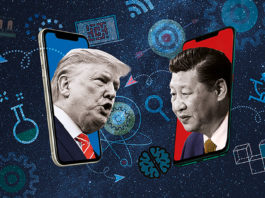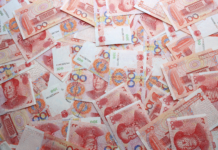Company Boards in China and India – Functioning on Half a Brain?
By Alice de Jonge
Studies have shown that companies perform better when there is an equal representation of women at senior levels. However, some countries...
A Different Global Power? Understanding China’s Role in the Developing World
By Xiangming Chen & Ivan Su
China is now the largest trading nation in the world, with strong ties to Africa, Latin and America and...
A Tale of Two Games: Global Strategies of Multinational Companies in China’s E-commerce Market
By Xin Wang and Justin Ren
Why has there been hardly any successful entry into China’s e-commerce market by western firms? From consumer-to-consumer markets to...
Is China Buying the World?
By Peter Nolan
China’s ‘catch-up’ has been one of the most remarkable aspects of the era of capitalist globalisation. Below, Peter Nolan argues that the...
China and Southeast Asia: Unbalanced Development in the Greater Mekong Subregion
By Xiangming Chen & Curtis StoneIntegrating with Southeast Asia is a key component of China’s multi-pronged regionalisation around its borders as its global rise...
China, the Future and it’s Challengers
By Miguel A. Ariño & Mª Luisa Blazquez
Although the economic and social evolution of China in the last three decades has been remarkable, there...
China in Africa: Think again
By Deborah Bräutigam
You think you know what China is doing in Africa. You’ve seen the headlines: the Chinese arrived in Africa a few years...
The ICBC Path to Chinese Governance: Lessons for the Western and Emerging Markets
By Didier Cossin & Abraham LuSince its dual IPOs in 2007, the Industrial and Commercial Bank of China Limited (ICBC), one of the largest...
Foreign Direct Investment: Can China Teach the World a Lesson?
By Saul Estrin
Professor Saul Estrin examines China's growth as a global leader, and its growing global reach resulting from Foreign Direct Investment. As well...
A Brand Culture Approach to Chinese Branding in the Global Marketplace
By Wu Zhiyan, Janet Borgerson & Jonathan Schroeder
Global brand literacy is expanding rapidly, as is the appeal of brand identity, for a growing number of brand conscious Chinese consumers. Below, Wu Zhiyan, Janet Borgerson and Jonathan Schroeder examine how Chinese branding efforts express significant aspects of Chinese brand culture, and explore the possibilities and processes of constructing global Chinese brands.
Our research on Chinese brand culture investigates the processes and possibilities of developing global brands via a brand culture approach. Often, studies in international marketing and consumer research overlook the ways in which brand development adapts to market conditions and, importantly, contributes to public discourse. Although contexts and situations may be acknowledged to influence, if not determine, brand meanings, the co creative power of multiple brand actors is often overlooked.
In contrast, a brand culture approach directs our attention to shifts and changes that occur through repeated interactions between various actors across time and space. In this way, a cultural analysis of brand development draws attention to emerging new knowledge around the co creation and circulation of brands and cultures, highlighting gaps in previous approaches. Culture, which includes aspects of particular histories and moments of creative innovation, can be perceived as a resource upon which branding processes and practices can draw. Yet, there are many ways in which branding processes and practices – and brands themselves – go beyond this subsidiary role, and indeed, co create culture.























































